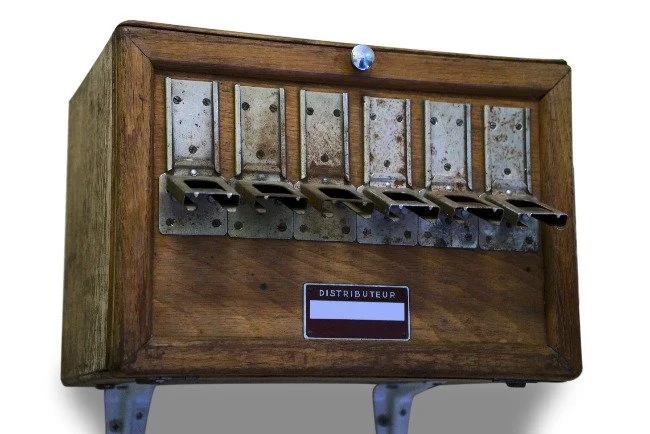The Evolution of Vending Machines & Industry
Vending machines have been around for over 100 years and have changed a lot in that time. Let’s take a look at some of the major changes that have occurred in the vending machine and the vending industry.
Payment options
Until fairly recently, vending machines only accepted cash, but today they offer various payment options, including credit cards, debit cards, and mobile payments. This makes it more convenient for people to buy from vending machines, and it also helps to reduce vandalism.
In the early days of vending machines, coins were the only way to pay. This could be inconvenient for people who did not have any change, and it also made it easy for people to steal from vending machines. In the 1950s, vending machines began to accept paper money. This made it easier for people to pay for items from vending machines and made it more difficult to steal from them.
In the 1980s, vending machines began to accept credit cards. This major innovation allowed people to buy items from vending machines without carrying cash or change. Credit card payments further deterred theft, as they could only be programmed to accept valid credit card numbers.
By the 2000s, vending machines began to accept mobile payments. Mobile payments make buying items from vending machines even more convenient and help reduce vandalism. Vending machines became a wider solution for an increasingly mobile society looking for convenience.
Product selection
Candy, snacks, and drinks were once the only options for vending customers. Now vending machines offer various products, including healthy snacks, fresh food, and electronics. As people became more health-conscious, the demand for healthy snacks and fresh food increased. Vending machine operators responded to this demand by adding healthy options to their machines.
In recent years, vending machine operators have also begun offering electronics, such as cell phone chargers, headphones, and even clothing items. People increasingly use their mobile devices and need a way to keep them charged while on the go and are looking for convenience items while on the move.
Technology
Technology has driven many of the convenience features we see today. Machines now have touch screens, cameras, and sensors that help to prevent theft and vandalism. They also have inventory management systems that help track stock levels and prevent product spoilage.
Here are some of the most common technological advancements in vending machines:
Touch screens: Touch screens have become popular in vending machines because they are more user-friendly than traditional buttons. They also allow vending machine operators to display more information about their products, such as nutritional information and images.
Cameras: Cameras are often used in vending machines to prevent theft and vandalism. They can be used to identify people who try to steal items from machines, and they can also be used to monitor machines for signs of vandalism.
Sensors: Sensors are used in vending machines to detect various conditions, such as low inventory levels, product spoilage, and tampering. Vending machine operators can use this information to take corrective action, such as restocking machines, replacing spoiled products, or investigating tampering incidents.
Inventory management systems: Inventory management systems are used to track the stock levels of products in vending machines. Vending machine operators can use this information to ensure that machines are always stocked with the products that people want, and it can also be used to prevent product spoilage.
These are just a few technological advancements made in vending machines. As technology continues to evolve, we can expect to see even more changes in the vending machine industry in the years to come.
Vending machines have come a long way since their humble beginnings. They are now a convenient and popular way to purchase various products. As technology continues to evolve, we can expect to see even more changes in the vending machine industry in the years to come.
Important dates and locations
1886: The first vending machine is invented by Jacobus Cornelius van Marken. It is a simple machine that dispenses chocolate bars.
1893: The first vending machine in the United States was installed at the World's Columbian Exposition in Chicago. It sells gum and candy.
1926: The first vending machine that accepts paper money is invented.
1950: The first vending machine that accepts credit cards is invented.
2000: The first vending machine that accepts mobile payments is invented.
2023: Vending machines are now a popular way to purchase various products, including healthy snacks, fresh food, and electronics.

